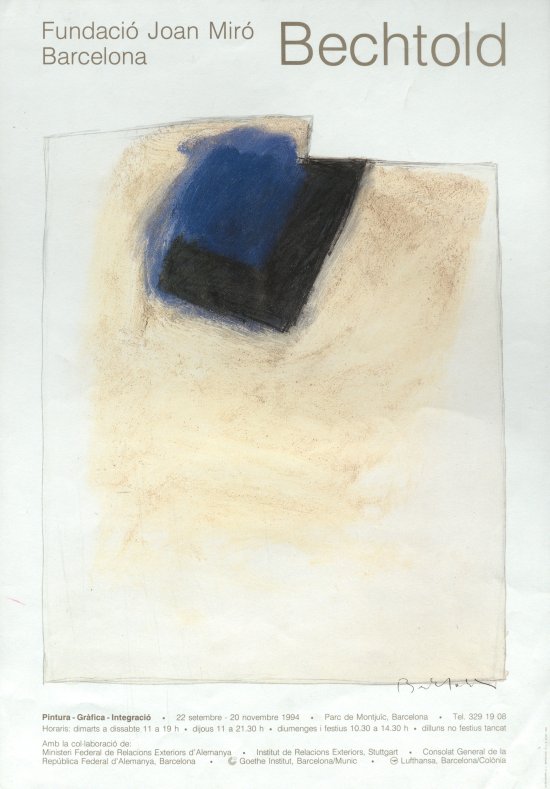- Dates
- —
Erwin Bechtold: Painting-Graphics-Integration
Bechtold’s influence on Catalan Informalism and contemporary Spanish painting has been decisive. He arrived from Germany when our Informalism was at its height and immediately became one of the leading exponents of Barcelona abstraction. But he soon realised that Ibiza was the only place where he could find the space and time to live and paint, where he found ‘peace and order’, as Joan Teixidor put it in one of his writings.
This methodical, sensitive painter evolved from painting with bright colours and organic gestures to an architecture of forms controlled by rationality, which he arranged with solutions full of contrasts and tensions, calculated with the utmost precision. Intense colours gave way to whites, blacks and sun-toasted colours – in all their registers – which he articulated in empty or full structures that played with the finite and the infinite.
However, unlike the more purist constructivists and the strictest geometricists, Bechtold provokes a dialectic of contrast, of what closes and what opens, of what determines a line and what outlines a form, in a constant dialogue between rationality and sensibility, until he finds the exact point of a formal articulation that brings all the elements together in a coherent unity.
In this documentary review of his work, which allows us to follow his transition from Informalism to Organic Abstraction, from gesture to composition and the architecture of form, we discover a Bechtold who is an analyst of pictorial space, a researcher of form, a deep thinker of plastic language, maintaining taut what comes from emotion and what is the product of meditation.
An important series of his recent works is entitled Ángulo/superficie/espacio (Angle/Surface/Space), three dimensions that he works on and permutes until he finds a purified, concrete, elegant image that prevents him from adding or removing anything from the picture, because everything is in its exact place.
If matter and colour were driven by instinct during an initial phase, sensuality now seems to dominate these surfaces, handled with a rich, warm materiality that gives greater density to the curves of the form. This purification has led him to eliminate all anecdotes in order to focus on a construction of pictorial space understood as a reflection, a form of thought, a delimitation of territories, a kind of reconciliation such as that offered by the Mediterranean: the conjunction between what is culture and what is spirit.


